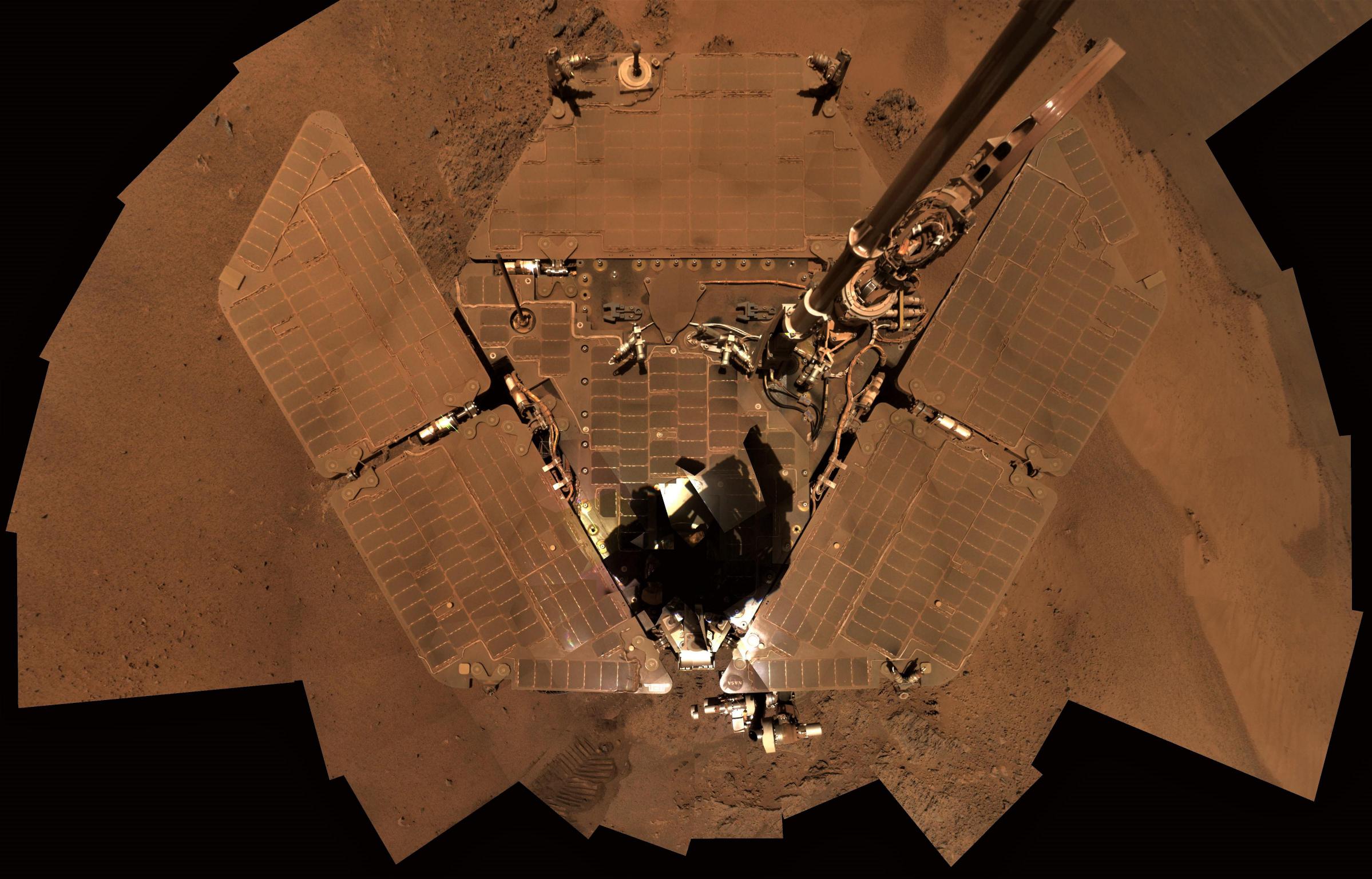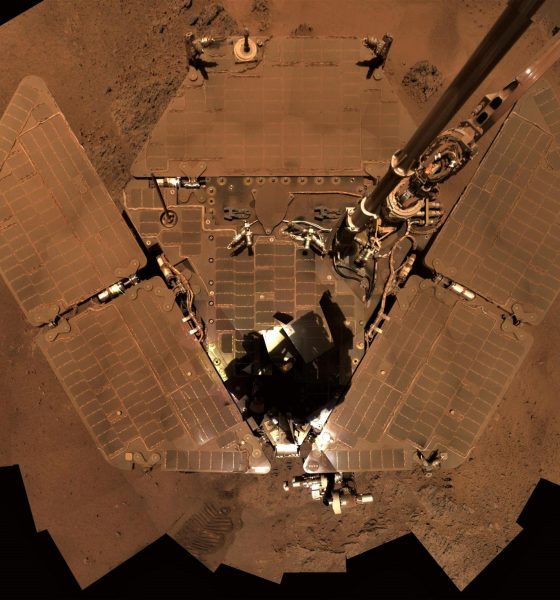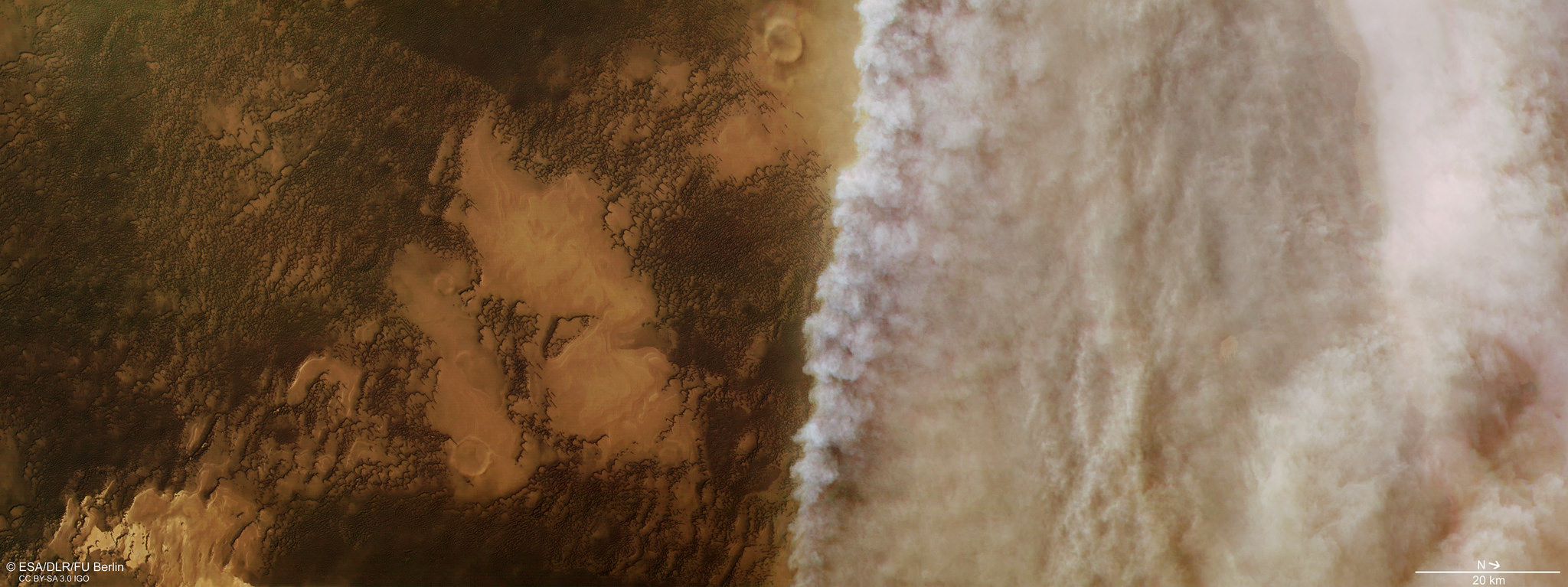

News
NASA may prematurely kill long-lived Mars rover with arbitrary wake-up deadline
In a decision with no obvious empirical explanation, JPL’s Opportunity Mars rover project manager John Callas was quoted in an August 30th press release saying that the NASA field center would be “forced to conclude” that the dust storm-stricken rover was effectively beyond saving if it fails to come back to life 45 days after 2018’s massive dust storm can be said to have officially ended.
Below the upbeat-sounding title of this press release is the scarier fact that after tau clears below 1.5, the rover has 45 days to wake up before NASA stops actively trying to revive it. Come on, #WakeUpOppy https://t.co/piCQLeaCEO
— Emily Lakdawalla (@elakdawalla) August 30, 2018
Over the course of that press release, Callas made a number of points that may technically hold at least a few grains of truth, but entirely fail to add up to any satisfactory explanation for the choices described therein. This is underscored in one critical and extended quote:
“If we do not hear back [from Opportunity] after 45 days, the team will be forced to conclude that the Sun-blocking dust and the Martian cold have conspired to cause some type of fault from which the rover will more than likely not recover. At that point, our active phase of reaching out to Opportunity will be at an end. However, in the unlikely chance that there is a large amount of dust sitting on the solar arrays that is blocking the Sun’s energy, we will continue passive listening efforts for several months.” – John Calwell, JPL
Scott Maxwell, a former JPL engineer who led drive planning for rovers Spirit and Opportunity, solidly explained the differences between active and passive recovery attempts:
Because it's a FAQ … "active listening" has two parts: (1) forcing Opportunity's radio, if she's listening, to a particular frequency (because it can drift), and (2) a command to talk to us. Pretty much guaranteed to work if she's awake with her radio on. https://t.co/iaHbHXFKqm
— 🇺🇦ScottMaxwell @marsroverdriver@deepspace.social (@marsroverdriver) August 31, 2018
The JPL press release offers exactly zero explanation for the “45-day” deadline, starting the moment that dust clears from Martian skies near Opportunity to a certain degree, likely to happen within the next few weeks. Nor does it explain why “active” recovery attempts would stop at that point, despite the fact that the PR happens to directly acknowledge the fact that the best time to attempt to actively restore contact Opportunity might be after Mars’ windy season is given a chance to blow accumulated dust off of the rover’s solar arrays.
In fact, while all points Callas/the press release makes may theoretically be valid, the experiences of the actual engineers that have been operating Opportunity and MER sister rover Spirit for nearly two decades suggest that his explanations are utterly shallow and fail even the most cursory comparison with real data.
Thanks largely to a number of comments collected by The Atlantic from past, present, and anonymous employees involved with Opportunity, it would seem that there is no truly empirical way to properly estimate the amount of dust that may or may not be on the rover’s solar arrays, no rational engineering-side explanation for the 45-day ultimatum, no clear excuse for how incredibly short that time-frame is, and essentially zero communication between whoever this decision originates from and the engineers tasked with operating and restoring communications with the forlorn, 15-year old rover.

Most tellingly, this exact impromptu dust-storm-triggered hibernation already occurred several times in the past, and even resulted in the demise of Opportunity’s sister rover Spirit in 2010. The Atlantic notes that when a dust storm forced that rover into hibernation in 2010, JPL mission engineers spent a full ten months actively attempting to resuscitate Spirit, followed by another five months of passive listening before the rescue effort was called off.
Given that Opportunity’s engineers appear to believe that there is every reason to expect that the rover can, has, and should survive 2018’s exceptional Martian dust storm, the only plausible explanation for the arbitrary countdown and potentially premature silencing of one of just two active rovers on Mars is purely political and financial. While it requires VERY little money to operate scientific spacecraft when compared with manufacturing and launch costs, the several millions of dollars needed to fund operations engineers and technicians (roughly $15 million per year for Opportunity) could technically be funneled elsewhere or the employees in question could be redirected to newer programs.
For example, the ~$200 million spent operating the rover from 2004 to 2018 could instead fund considerably less than 20% of the original cost of building and launching both Opportunity and Spirit. This is to say that that cutting operation of functioning spacecraft to save money can be quite fairly compared with throwing an iPhone in the trash because the charging cable ripped because $10 could instead be put towards buying a new phone months or years down the line.
Ultimately, all we can do is hope that Opportunity manages to successfully wake up over the course of the next two or three months. If the rover is unable to do so, chances are sadly high that it will be lost forever once active communications restoration efforts come to an end. With an extraordinarily productive 15 years of exploration nearly under its belt, Opportunity – originally designed with an expected lifespan of ~90 days – would leave behind a legacy that would fail to disappoint even the most ardent cynic. Still, if life may yet remain in the rover, every effort ought to be made to keep the intrepid craft alive.
For prompt updates, on-the-ground perspectives, and unique glimpses of SpaceX’s rocket recovery fleet check out our brand new LaunchPad and LandingZone newsletters!

News
Tesla (TSLA) receives “Buy” rating and $551 PT from Canaccord Genuity
He also maintained a “Buy” rating for TSLA stock over the company’s improving long-term outlook, which is driven by autonomy and robotics.

Canaccord Genuity analyst George Gianarikas raised his Tesla (NASDAQ:TSLA) price target from $482 to $551. He also maintained a “Buy” rating for TSLA stock over the company’s improving long-term outlook, which is driven by autonomy and robotics.
The analyst’s updated note
Gianarikas lowered his 4Q25 delivery estimates but pointed to several positive factors in the Tesla story. He noted that EV adoption in emerging markets is gaining pace, and progress in FSD and the Robotaxi rollout in 2026 represent major upside drivers. Further progress in the Optimus program next year could also add more momentum for the electric vehicle maker.
“Overall, yes, 4Q25 delivery expectations are being revised lower. However, the reset in the US EV market is laying the groundwork for a more durable and attractive long-term demand environment.
“At the same time, EV penetration in emerging markets is accelerating, reinforcing Tesla’s potential multi‑year growth runway beyond the US. Global progress in FSD and the anticipated rollout of a larger robotaxi fleet in 2026 are increasingly important components of the Tesla equity story and could provide sentiment tailwinds,” the analyst wrote.
Tesla’s busy 2026
The upcoming year would be a busy one for Tesla, considering the company’s plans and targets. The autonomous two-seat Cybercab has been confirmed to start production sometime in Q2 2026, as per Elon Musk during the 2025 Annual Shareholder Meeting.
Apart from this, Tesla is also expected to unveil the next-generation Roadster on April 1, 2026. Tesla is also expected to start high-volume production of the Tesla Semi in Nevada next year.
Apart from vehicle launches, Tesla has expressed its intentions to significantly ramp the rollout of FSD to several regions worldwide, such as Europe. Plans are also underway to launch more Robotaxi networks in several more key areas across the United States.
News
Waymo sues Santa Monica over order to halt overnight charging sessions
In its complaint, Waymo argued that its self-driving cars’ operations do not constitute a public nuisance, and compliance with the city’s order would cause the company irreparable harm.

Waymo has filed a lawsuit against the City of Santa Monica in Los Angeles County Superior Court, seeking to block an order that requires the company to cease overnight charging at two facilities.
In its complaint, Waymo argued that its self-driving cars’ operations do not constitute a public nuisance, and compliance with the city’s order would cause the company irreparable harm.
Nuisance claims
As noted in a report from the Los Angeles Times, Waymo’s two charging sites at Euclid Street and Broadway have operated for about a year, supporting the company’s growing fleet with round-the-clock activity. Unfortunately, this has also resulted in residents in the area reportedly being unable to sleep due to incessant beeping from self-driving taxis that are moving in and out of the charging stations around the clock.
Frustrated residents have protested against the Waymos by blocking the vehicles’ paths, placing cones, and “stacking” cars to create backups. This has also resulted in multiple calls to the police.
Last month, the city issued an order to Waymo and its charging partner, Voltera, to cease overnight operations at the charging locations, stating that the self-driving vehicles’ activities at night were a public nuisance. A December 15 meeting yielded no agreement on mitigations like software rerouting. Waymo proposed changes, but the city reportedly insisted that nothing would satisfy the irate residents.
“We are disappointed that the City has chosen an adversarial path over a collaborative one. The City’s position has been to insist that no actions taken or proposed by Waymo would satisfy the complaining neighbors and therefore must be deemed insufficient,” a Waymo spokesperson stated.
Waymo pushes back
In its legal complaint, Waymo stated that its “activities at the Broadway Facilities do not constitute a public nuisance.” The company also noted that it “faces imminent and irreparable harm to its operations, employees, and customers” from the city’s order. The suit also stated that the city was fully aware that the Voltera charging sites would be operating around the clock to support Waymo’s self-driving taxis.
The company highlighted over one million trips in Santa Monica since launch, with more than 50,000 rides starting or ending there in November alone. Waymo also criticized the city for adopting a contentious strategy against businesses.
“The City of Santa Monica’s recent actions are inconsistent with its stated goal of attracting investment. At a time when the City faces a serious fiscal crisis, officials are choosing to obstruct properly permitted investment rather than fostering a ‘ready for business’ environment,” Waymo stated.
News
Tesla FSD v14.2.2 is getting rave reviews from drivers
So far, early testers have reported buttery-smooth drives with confident performance, even at night or on twisty roads.

Tesla Full Self-Driving (Supervised) v14.2.2 is receiving positive reviews from owners, with several drivers praising the build’s lack of hesitation during lane changes and its smoother decision-making, among others.
The update, which started rolling out on Monday, also adds features like dynamic arrival pin adjustment. So far, early testers have reported buttery-smooth drives with confident performance, even at night or on twisty roads.
Owners highlight major improvements
Longtime Tesla owner and FSD user @BLKMDL3 shared a detailed 10-hour impression of FSD v14.2.2, noting that the system exhibited “zero lane change hesitation” and “extremely refined” lane choices. He praised Mad Max mode’s performance, stellar parking in locations including ticket dispensers, and impressive canyon runs even in dark conditions.
Fellow FSD user Dan Burkland reported an hour of FSD v14.2.2’s nighttime driving with “zero hesitations” and “buttery smooth” confidence reminiscent of Robotaxi rides in areas such as Austin, Texas. Veteran FSD user Whole Mars Catalog also demonstrated voice navigation via Grok, while Tesla owner Devin Olsen completed a nearly two-hour drive with FSD v14.2.2 in heavy traffic and rain with strong performance.
Closer to unsupervised
FSD has been receiving rave reviews, even from Tesla’s competitors. Xpeng CEO He Xiaopeng, for one, offered fresh praise for FSD v14.2 after visiting Silicon Valley. Following extended test drives of Tesla vehicles running the latest FSD software, He stated that the system has made major strides, reinforcing his view that Tesla’s approach to autonomy is indeed the proper path towards autonomy.
According to He, Tesla’s FSD has evolved from a smooth Level 2 advanced driver assistance system into what he described as a “near-Level 4” experience in terms of capabilities. While acknowledging that areas of improvement are still present, the Xpeng CEO stated that FSD’s current iteration significantly surpasses last year’s capabilities. He also reiterated his belief that Tesla’s strategy of using the same autonomous software and hardware architecture across private vehicles and robotaxis is the right long-term approach, as it would allow users to bypass intermediate autonomy stages and move closer to Level 4 functionality.








